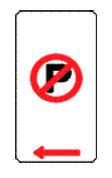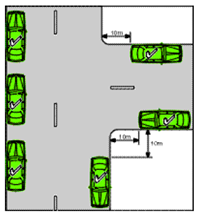Parking

The Shire of East Pilbara implements Local Laws to maximise the use of available space and to provide safe access to parking for all motorists. Here you can find out more about parking laws.
The Shire of East Pilbara's Parking Local Laws and are designed to maximise the use of available space and safe parking for all motorists with regard to the requirements of business, visitors, residents and traffic management.
Illegal parking can be dangerous to pedestrians, cyclists and other road users and causes frustration, inconvenience and irritation.
A no tolerance approach is taken on all parking offences within the Shire of East Pilbara. It is the motorist's responsibility to check the relevant parking signs prior to leaving their vehicle. Vehicle parking is governed by the Local Laws monitored by the Shire's Ranger Services. On the Spot fines apply for breaches of these laws. To help you understand the parking regulations please see the below information.

What are the most frequent offences that occur within the Shire.
No stopping areas
A no stopping area can be defined by signage or a continuous yellow line painted along the edge of a carriageway. A driver shall not stop on a length of carriageway, or in an area, to where no stopping restrictions apply. Drivers are not permitted to drop off passengers or goods in no stopping areas. Pay attention to the direction of the arrows.


No parking areas
A driver shall not stop on a length of carriageway or in an area to which a "No Parking" sign applies, unless the driver:
- is dropping off, or picking up passengers or goods; and
- does not leave the vehicle unattended; and
- completes the dropping off, or picking up, of the passengers or goods within two minutes after stopping.
Verge parking
To park on a street verge or nature strip, permission from the owner or occupier of the property immediately adjacent (behind the verge) must be given. Signage may be installed to restrict or prohibit verge parking and must be adhered to regardless of whether permission by the owner or occupier has been given. These signs apply to all drivers including those of the residence.
Footpath parking
Footpaths, as the name suggests are for FEET. Footpaths provide pedestrians with a safe alternative to walking on roads. By parking vehicles that block any portion of the footpath, including the crossover (where your driveway and footpath meet), pedestrians may be forced onto the road. This can be both frustrating and dangerous for pedestrians, especially people with prams, people with disabilities and the young children. NO PORTION OF A VEHICLE IS PERMITTED TO PARK SO THAT ANY PORTION OF THE VEHICLE IS ON, OVER OR IN FRONT OF A FOOTPATH.
Facing wrong direction
Parking against the flow of traffic is illegal and can be hazardous, particularly when exiting from the parking place. At all times you are required to park or stop your vehicle so it faces the same direction as the flow of traffic. The intention of this regulation is to eliminate accidents that can occur by the drivers blind sight.
Parking near corners
Vehicle may not park within 10 metres of a corner where no traffic lights exist. This areas must be kept clear so other road users have a clear view when approaching and leaving. Vehicles that are parked too close to a corner pose a danger to other road users negotiating the corner. In particular trucks and buses that need this area to negotiate the turn safely.

Parking on a carriageway
If the carriageway has a continuous dividing line, dividing strip or a median strip, the driver of a vehicle shall position the vehicle at least 3 metres from the continuous line, dividing strip or a medium strip, unless otherwise indicated by information on or with a parking control sign.
Median strip parking
Median strips are used to divide traffic flow and enhance safety on busy roads. Vehicles are not permitted to park or stop on any median strip regardless of whether signs have been installed.
Stopping near a fire hydrant
A driver shall not stop a vehicle so that any portion of the vehicle is within one metre of a fire hydrant or fire plug, or of any sign or mark indicating the existence of a fire hydrant or fire plug, leaving the vehicle unattended. A white "H" road marking indicates the existence of a fire hydrant. Blue cats eyes also indicate the location of a hydrant.
Obstructing access to a driveway
A driver shall not stop a vehicle so that any portion of the vehicle is in front of a path, in a position that obstructs access by vehicles or pedestrians to or form that path.
Parking area/bays
When parking a vehicle in a thoroughfare or parking area the vehicle must be parked wholly within a bay. Where the parking bay is set out parallel to the kerb the vehicle must be parked as close to the kerb as is practicable and be facing in the direction of the movement of traffic on the side of the thoroughfare in which the bay is situated. If a vehicle is too long or too wide to fit completely within a single parking bay then the person parking the vehicle must do so within the minimum number of parking bays needed to park that vehicle.
ACROD parking
ACROD parking bays are reserved for people with disabilities that have a valid ACROD permit. These parking bays are placed in the most convenient locations and as such are preferred parking spots. Regardless of how long you intend to park and whether other ACROD bays is available, Non-ACROD permit holders are prohibited unconditionally from parking in these bays.
Disabled Parking Signs & Road Marking
To obtain an ACROD permit visit this site for more information.

